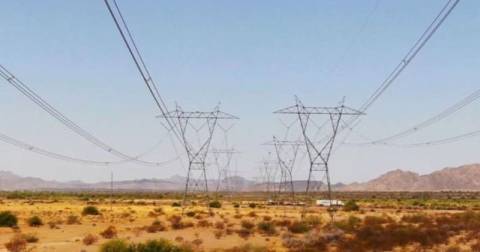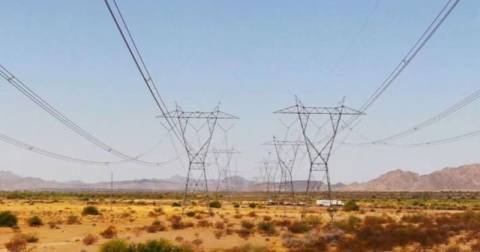ARIZONA: Tensions are rising in southern Arizona as construction resumes on the massive $10 billion SunZia Transmission Line project, a key component of the Biden administration’s renewable energy transition plan.

As tractors return to clear land and build access roads, Native American groups are reportedly standing firm in their opposition.

Despite the project's touted benefits, these groups continue to voice concerns about the transmission line cutting through a valley of significant cultural importance, vowing to keep pushing the federal government to address their issues, per KTAR News.
A project bigger than the Hoover Dam
Pattern Energy, a California-based developer, has dubbed the SunZia transmission line as a colossal infrastructure project that surpasses the Hoover Dam.
This transmission line will span approximately 550 miles (885 km) and transport electricity from extensive wind farms located in central New Mexico to densely populated regions as distant as California.
In September, executives and federal officials reportedly convened in New Mexico to initiate the SunZia project, celebrating the culmination of years-long negotiations that led to the necessary approvals from the Bureau of Land Management.
However, in Arizona, the progress of the project hit a temporary roadblock this month. Work was briefly suspended along a 50-mile (80-km) segment of the line traversing the San Pedro Valley.
This pause was prompted by concerns raised by the Tohono O'odham Nation, other tribal groups, and archaeologists.
Tribal leaders' meet scheduled
They claimed that the Bureau of Land Management had not formally consulted them before the commencement of the work.
On Wednesday, the Bureau of Land Management lifted the temporary halt on the project and work recommenced. A meeting with tribal leaders has been scheduled for December 11 by the agency.
In a letter sent to the developer on Monday, federal land managers stated that the timing of the information provided by the tribes, considering the extensive planning and permitting that has spanned several years, did not warrant a work stoppage.
The agency pointed out that the right of way through the valley was granted back in 2015.
The SunZia transmission line project is an important part of transitioning our nation to a clean energy economy by creating jobs, lowering energy costs and boosting local economies, and the BLM is committed to implementing it with as little impact as possible, agency rep Brian Hires stated.
What did Tohono O’odham chairman say?
The BLM stated that during the pause, it had engaged in discussions with tribal representatives.
The agency committed to collaborating with the tribes to assess if the valley could be recognized as a traditional cultural property, while also mitigating the impact of the transmission line on cultural and archaeological sites.
The BLM clarified that it had not been informed of any new cultural sites beyond those already identified.
Expressing his disappointment, Tohono O’odham chairman Verlon M Jose stated that he was not surprised by the federal government’s decision to proceed before fulfilling its duty to consult with the tribes.
It's more than a slap in the face. It’s a punch to the gut, he said during an interview.
They reversed course and allowed construction to continue before the meeting could take place. You know, it is difficult to describe this decision as anything other than acting in bad faith, he added.
Jose noted that bulldozers have already begun clearing roads and pads for the massive towers that will support the high-voltage lines. This has resulted in damage to the land, which he described as having a high concentration of sacred sites.
The tribal members are feeling frustrated due to this development.
'There has not been true, meaningful consultation'
He expressed the significance of the region's rolling hills and mountains by stating, This holds great importance for us.
There has not been true, meaningful consultation on this — all these years. And if we had worked together to address these issues, I'm sure we could have mitigated the concerns here, he added.
The Tohono O'odham people, who are entrusted with cultural and traditional duties to protect the land and its inhabitants, are advocates for climate change initiatives.
However, they demand that federal laws give due regard to cultural and historic sites during development.
Tribal leaders, including Jose, have expressed dissatisfaction with the federal government’s consultation process, viewing it as a mere procedural step, despite assurances from US Interior Secretary Deb Haaland of tribal participation.
This concern is underscored in the permitting decisions for mining and oil development projects spanning from Nevada and New Mexico to Alaska.
What did SunZia project developers say?
The developers of the SunZia project reportedly maintain that they have engaged with tribes over the years and have conducted surveys to identify cultural resources in the San Pedro Valley.
Natalie McCue, from Pattern Energy, has committed to ongoing support for the consultation process between the federal government and tribes, and to implementing any mitigation strategies that may arise from these discussions.
